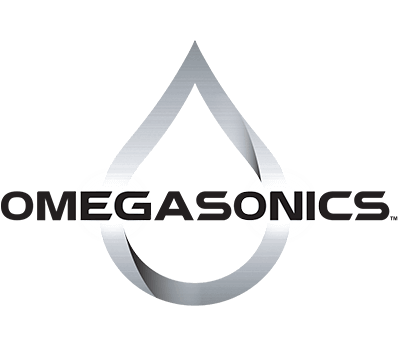When you’re making your selection for the right ultrasonic cleaner for your business, you’ll need to take several factors into consideration. Tank size, power usage, and frequency are just a few. You may unintentionally overlook ultrasonic cleaner frequency, but it really is one of the most important considerations in choosing the right one.
How Ultrasound Cleans so Effectively
When ultrasound moves through a liquid and strikes against a solid object, it creates millions of tiny cavitation bubbles. Cavitation bubbles are basically tiny, collapsing, vacuum-filled bubbles. Under the pressure of continuous vibration, these microscopic bubbles stretch and compress at a fast rate. Once they reach a certain size, according to the frequency and strength of the sound waves produced, the bubbles lose their structural integrity and collapse violently. When these implosions happen near a solid surface, the bubbles emit high-powered streams of plasma that collide with, agitate and remove even foreign particles and substances from that surface. Hence, they clean even the toughest grime from solid objects of many different types of materials.
Ultrasonic technology can be used to clean metals, plastics, glass, rubber, and ceramics. It effectively removes a wide variety of contaminants, even if present only in trace amounts, including dust, dirt, rust, oil, grease, soot, mold, carbon deposits, polishing compounds, wax, pigments, lime scale, bacteria, algae, fungus, fingerprints and biological soil.
Why Ultrasonic Cleaner Frequency Matters
When it comes to ultrasonic power generation, the frequency generated determines the effectiveness of ultrasonic cleaning, depending on the particular application.
With lower frequencies, fewer cavitation bubbles are produced, but the bubbles are greater in both size and the energy released at implosion. This increases the likelihood of physical damage to items being cleaned. For example, “softer” metals such as aluminum and brass may end up with slight but obvious “cavitation damage” if they are cleaned in a low-frequency machine.
At the other end of the spectrum, higher frequencies generate more bubbles that are smaller in size and offer a lower level of energy and gentler cleaning action.
Below are some specific examples of common ultrasonic cleaner frequencies and the best applications for them:
25 kHz: Heavy-Weight Hitter
At the lowest end of the ultrasonic cleaner frequency range, a 25 kHz ultrasonic cleaner is used with larger mass items, such as cleaning cast iron blocks used for injection molding, massive steel cutting tools or large stainless steel plates. It works best when the grime is on the surface of the item and needs a little more punch to remove it. This frequency also works well for removing baked-on materials and is often found on plating lines for pre-treatment prior to the plating process. Larger tanks often are retrofitted with 25 kHz systems for these types of jobs.
40 kHz: Middle of the Road Standard
Most ultrasonic cleaning machines feature this standard frequency, which produces mid-sized cavitation bubbles with a 40 kHz generator. The vast majority of ultrasonic cleaning uses can be covered by this frequency, which has enough power to shake contaminants loose but also can penetrate closer to the substrate without causing damage. This frequency works best when items have a complicated structure or blind holes that are difficult to reach using the larger cavitation bubbles generated at lower frequencies.
Typical uses of 40 kHz ultrasonic cleaners include carburetor cleaning, removing oils and metal chips from general machine shop applications, soot removal from items damaged in fires, cleaning of ceramics used in the high technology fields, removal of biological contaminants from surgical tools.
68/132/170 kHz: Gentle But Still Effective
These higher frequency generators are less common, accounting for only 5 percent of the ultrasonic cleaning market. These ultrasonic cleaners offer ultra-fine gentle cleaning, including removal of the tiniest particles, and delicate cleaning applications that require cavitation bubbles penetrate even closer to the substrates being cleaned.
Common applications include the medical and optical industries, semiconductor wafer fabrication, production electronics, fine instrumentation and computer memory components.
What Frequencies Does Omegasonics Offer?
Omegasonics offers four frequencies in its ultrasonic cleaning units: 25, 40, 68 and 170 kHz. As you can see, these cover the range of potential cleaning applications. The descriptions above may help you select which frequency is best for your specific needs, but it’s always best to speak with one of our experts before making your final selection. Unless you customize your ultrasonic cleaning unit to have multiple frequencies, you will not be able to adjust the frequency on your tank. Let our team at Omegasonics know your exact specifications and application when ordering, and we will build according to your needs.
Want to know more? Contact one of our ultrasonic cleaning consultants today at Omegasonics or give our experts a call at (888) 420-4445.

